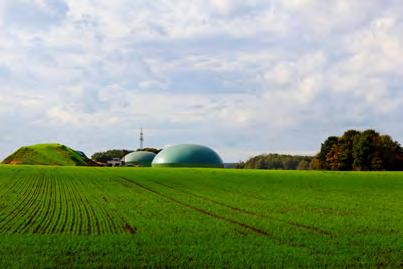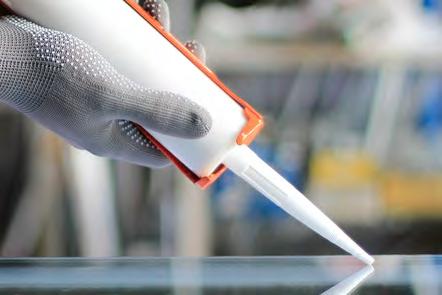FEICA NEWS @CANVA


The FEICA 2023 Master Class
The2023FEICAAdhesive&SealantConferencewilltakeplace at the PortAventura Convention Centre in Tarragona, Spain, from13to15September2023.
Thisyear'sMasterClassistitled'Transitioningtosustainableraw materials:themassbalanceapproach’andwillexplainwhythis particular chain-of-custody model is so important for our industry to participate in the shift to more sustainable feedstocks.

The 2023 FEICA Master Class
‘Transitioning to sustainable

:

REGISTER NOW www.feica-conferences.com CONNECT ISSUE52 MAY2023
IN THIS ISSUE Page 1 continued on next page
materials:
mass
approach’
FEICA2023EarlyBirdendstoday 2 Mass balance value chain of custody method in plastics and constructionproducts 3 The FEICA Webinar presentation
Points of discussion
Cornerstones
PUtrainingdeadlineisin80days! 8 29 September is International AdhesiveandSealantday 9 TheFEICAMediaKit 10 @CANVA
‘Transitioning
to
sustainable raw materials: the mass balance approach’
raw
the
balance
1
now available: 'Adhesives in the context of paper and board recycling' 6
regarding the
for the new EU Construction Products Regulation (CPR) 6
THE MASS BALANCE APPROACH
continued from previous page
Integrating renewable raw materials in products, including biobased and recycled materials,isatopofmindissueforEuropean industry. Recycled content targets in upcoming regulation, likely starting with packaging, will further accelerate this shift awayfromfossilmaterials.
'Transitioningtosustainablerawmaterials:the mass balance approach' is scheduled on Friday,15Septemberfrom8:30to10:30AM.

The Introduction to the Master Class will be givenbyDrDennisBankmann(Independent scientific consultant, Emerging Motif), who willalsoleadtheQ&Asession.
Dr Mathias Matner (Head of Sustainability and Advocacy, Coatings and Adhesives, Covestro) will explain mass balancing from the perspective of the raw material producers.
Dr Annett Linemann (Director Technology Outlook & Sustainability - Engineering Adhesives,H.B.Fuller)willexplaininterestfrom thepointofviewofdownstreamusers.
Dr Jan M. Henke (Director, ISCC System) will elaborate on certification and licensing, including where mass balancing is already applied, specifically for adhesives and sealants.
The FEICA Almost 400 registrations already Early Bird ends 31 May 2023 !
2023 keynotes
The theme for this year’s Business Forum is ‘Industry Innovation for Sustainable Development’.
TheForumwillfeaturetopkeynotespeakers and will be followed by a panel discussion on the innovation required for sustainable development.Moreinnextmonth'sissueof CONNECT!
The parallel break-out sessions, on Thursday 14 and Friday 15 September, will cover Business & Market Updates, Sustainable PU Adhesives, Contributions of A&S to Circular Economy, New Building Blocks for Hotmelts, Biobased Approaches for Adhesives and Novel Water-Based Adhesives, to name a few.


EXPO
The Table Top Exhibition features the latest developmentsfortheadhesiveandsealant industry and opens in the afternoon of Wednesday13September.
continued on next page
Page 2
The
@FEICA
The Breakout sessions Notyetregistered? Registerhere! visit www.feica-conferences.com
Massbalancevaluechainofcustodymethodinplastics andconstructionproducts
Current state of affairs
To achieve a circular economy for plastics, theuseofrecycledmaterialsneedsaboost. Alongside investments in climate neutral production and supply chains, greater support is needed to prevent waste generation, to reuse plastics and to rapidly scaleupmechanical,organicandchemical recycling.
Furthermore,inthecaseoftheconstruction industry, an increase in recycling and renewability is necessary. Here there is a needtosourcefromothermodelsinorderto augment the circularity of construction products while high quality and performancearepreserved.
It is incumbent upon the European Commission and Member States, therefore, to adopt in 2023 harmonised, calculating rulesforrecycledcontentofplasticsaswell asofconstructionproducts,bymeansofthe massbalancecreditmethod.
Massbalancecreditmethod
Whatisamassbalancecreditmethod?
Mass balance is a transparent and auditable method to trace a defined material characteristic along the value chainfrommaterialsupplierstoconsumers. ThismethodaccordswithISO22095:2020.
A mass balance chain of custody has alreadybeenimplementedinareassuchas sustainable forest products, biofuel, and fair-tradecocoaandchocolate.
Currentapproachestorecyclingintheareas of plastics and construction products must be augmented by a mass balance credit method if recycling goals, EU Green Deal priorities and the Transition Pathway of the Chemical Industry are to be realised in the nextcoupleofyears.
Regarding plastics, though mechanical recyclingshouldcontinuetobethemethod of preference because of cost, environmental performance and recycling yields,investmentsinchemicalrecyclingare necessary.
Such recycling allows the use of plastic wastetoproducenewchemicals,including plastics. High-quality material is thus available for contact-sensitive packaging (for pharmaceuticals, food and cosmetics), medicaldevicesandconstructionproducts.
For such a procedure to be successful and available at scale, European Union harmonised rules for calculating chemically recycledcontentarenecessary.
Furthermore, in order to meet upcoming recycling targets, chemical recycling processes can be viably and efficiently integrated into existing large-scale industrial installationstoproduceplastics.
The mass balance chain of custody can enablethesuccessfulcommercialisationand promotion of recycled content from technologieswhereneeded.
Page 3
continued on next page
With regard to construction products, the useofrenewableorrecycledrawmaterials in the chemical production of construction products can save resources and contribute to the reduction of greenhouse gasemissions.

Not all sectors and value chains, however, can benefit from dedicated (segregated) productionsystemstomeetthecustomers’ demands for recycled or bio-based products.Hence,customerswillneedtobe abletosourcefromothermodels.
Inthiscase,amassbalancecreditchain-ofcustody method satisfies the necessity for quickly increasing the supply of more sustainable products with existing at-scale technologies.
The mass balance credit method affords theprocessingofsustainablerawmaterials together with fossil raw materials in existing complexchemicalproductionnetworks.
So,itispossibletospeedupthetransitionto a circular economy while the quality and performance of end products are maintained.
Requirementsforthemassbalancemethod
A mass balance method needs to fulfil certain requirements to be transparent, trustworthyandreliable.
(1)It must avoid double counting and fostertransparentcommunicationbyusing trustworthy claims guaranteed by widely recognised third-party certification schemes (e.g., ISSC+ and REDcert). In this waycredibilityandtrustwillbeengendered throughoutthevaluechain.
(2)Therehavetobeclearstatementsthat calculations are based on the mass balancecreditmethodtomakeitpossible forcustomerstocorrectlyinterpretclaims.
(3)A fuel-use exempt model for the allocation of recycled content to output products is needed. For plastics, the legal basis of the Single-Use Plastics Directive (SUPD) can be employed to adopt European Union calculating rules to allow theuseofamassbalancecreditmethod. These rules must exhibit clarity and coherence across other pieces of legislation.
Page 4 continued from previous page
@CANVA continued on next page
A call to action
An urgent need exists for the European Commission to adopt a mass balance chain of custody to calculate chemically recycled content in plastics and construction products.
To meet 2030 recycled content targets, legal certainty is necessary regarding method in order to guarantee time for planning, financing, procuring of permits, and construction of further recycling centers and necessary infrastructure. Each of these elements involves a very time-consuming process.
In the case of plastics, for instance, rules currently being developed for the SUPD implementing act will affect both mechanical and chemical recycling investments in Europe.
Commercial-size chemical recycling investments will need to be made immediately, for example, to reach targets set for 2030 and 2040 in the Packaging and Packaging Waste Regulation (PPWR) recently proposed.
It is critical, therefore, that policy makers see to the application of a mass balance chain of custody in recycled plastics as soon as possible.
Precedent should be set for policy direction in nonpackaging plastic sectors, the construction sector for one. There are many associations from major market sectors already supporting the use of a mass balance credit method, including FEICA.
You can attend a FEICA Master Class on the Mass Balance Approach at the FEICA 2023. Go to www.feica-conferences.com.
Mass balance can become a key enabler for the physical transformation of the chemical industry. In addition to transparency and credibility, mass balance certification schemes are critical to ensure an ambitious and feasible change.
To trigger the de-fossilization of local value chains and encourage investments in products and processes based purely on renewable feedstocks, we need to progressively move to a mass balance standard that is sitespecific, allows for free attribution only towards reasonable products of a process, and solely considers carbon for the renewable content allocated to products.
Ulla Hüppe Head of Sustainability Henkel Adhesive Technologies
continued from previous page Page 5
FEICA held a webinar ‘Adhesives In the contextofpaperandboardrecycling–state of play’ on 30 March 2023 where adhesive technologies, their chemistry and many other pertinentissueswerediscussed.

The speakers also highlighted some points of importance regarding testing and evaluation methods to encourage both cooperation within the supply chain and future discussions withstakeholders.
www.feica.eu/informationcenter/all-information-centre
Cornerstones for the new EU Construction Products Regulation
FEICA and Deutsche Bauchemie have published a joint paper'Impetus for the ongoing discussion process’.
We announced the paper in the last issue of FEICA CONNECT. In this issue, we briefly present you the points of the discussion in the15February2023versionofthepaper.
The position paper presents clearly the ongoing developments in the Construction Products Regulation (CPR) and is available via:

www.feica.eu/information-center/allinformation-centre.
•The future EU Construction Products Regulation should have the legal user in mindandshouldbeaseasyaspossibleto understand as well as limited to the necessaryscope.
Page 6
continued on next page
The FEICA presentation and recording are available via the FEICA Information center here:
@CANVA
•All necessary provisions for construction products should be regulated exclusively in the future CPR. Construction products should be clearly excluded from the scope of the Ecodesign for Sustainable Products Regulation (ESPR).
•Following the basic idea of the harmonised zone, harmonised technical specifications should be comprehensive and cover all potential requirements. For example, combinations of several harmonised technical specifications would be contradictory.
•Allowing additional national requirements for harmonised construction products would contradict the basic principle of the harmonised zone and would severely endanger harmonisation and, ultimately, the internal market for construction products. So the proposed derogations must not be extended.
•The rule must remain that the expert bodies of the European Committee for Standardization (CEN) provide the content for harmonised technical specifications, with little intervention by the Commission.
•The procedure via the expert groups of the CEN should also apply to the sustainability aspects according to Annex I, Part A, points 1.8 and 2. In addition, the horizontal aspect of environmental sustainability always requires product category-specific concretisations.
•It is reasonable to follow the Commission's proposal and apply Parts B and C of Annex I only if the Commission has established the requirements for a specific product category by means of a delegated act.
•Standardisation activities under the CPR should be supported, optimised and accelerated by clear criteria, predefined procedures and additional control bodies.
•Under the new CPR, the opportunities of digitalisation should be used. The availability of declarations of performance and declarations of conformity in a machine-readable format are a prerequisite.
•It is essential to ensure that confidential and sensitive data, e.g., the technical documentation, are not part of the scope of the data to be reported. Presumably, a Digital Construction Products Passport (DCPP) could be established with lower hurdles and comparable results.
•Environmental Product Declarations (EPDs) with all core indicators of EN 15804+A2, in combination with workable application rules, and a uniform EUsoftware tool are the appropriate basis for a binding declaration of the environmental sustainability of construction products.
•Sustainability requirements should be set at the building level and not at the product level. It is not the delivered product but its installation situation that is decisive.

continued from previous page
continued on next page @CANVA Page 7
continued from previous page
•Traffic-light labelling for building products provides benefits only in justified individual cases. Implementation according to the scattergun approach could have even negative effects for sustainable construction if the installation situation is not considered.
•Neither the new CPR nor the new Ecodesign for Sustainable Products Regulation should predetermine the upcoming European chemicals legislation. The definition and restriction of ‘substances of concern’ as well as provisions on ‘microplastics’ should be regulated within the REACH Regulation to ensure overall coherency.
•The transitional provisions proposed by the Commission, with an approximately 20-year coexistence of the old and the new CPRs, would lead to confusion in practice. Pragmatic approaches to a solution are needed.
Cornerstones for the new EU Construction Products Regulation - Impetus for the ongoing discussion process
Click here to read the FEICA/Deutsche Bauchemie position paper covering ongoing developments in the Construction Products Regulation (CPR).


Safe use of diisocyanates deadline - 80 days left to complete the training!
As of 24 August 2023, training will be required for all professional and industrial users of products with a total monomeric diisocyanate concentration of > 0.1%. A training platform, available in several EU languages, can be accessed via www.safeusediisocyanates.eu.

To facilitate companies to comply with the information provision obligation, FEICA launched a dedicated information webpage 'www.feica.eu/PUinfo' and offers free vouchers for end-users: workers in the construction sector, or workers applying adhesives and sealants in industrial or nonindustrial settings.
Please see the FEICA website for more information. www.feica.eu

@CANVA Page 8
International Adhesive & Sealant Day launches in 2023
29 September 2023 will be the first International Adhesive & Sealant Day. From then on, this day will be celebrated each year, globally, showcasing adhesives and sealants as enablers of a sustainable future, promoting innovations that include novel solutions to improve material and process sustainability and life cycle performance.

The idea for an ‘International Adhesive & Sealant Day’ originated at the 2022 World Adhesive and Sealant Conference (WAC 2022) in Chicago, USA. Here, the International Association Heads of FEICA (The Association of the European Adhesive & Sealant Industry), ARAC (Federation of Asian adhesive associations) and ASC (American Adhesive and Sealant Council), unanimously approved a commemorative day on 29 September.
Adhesives and sealants have tremendous significance worldwide. An estimated 45,000 workers are directly employed in the industry, creating 250,000 different products.

They are used in many areas, including construction, transportation, medical products, furniture, healthcare, agriculture and food production, labelling and electronics. In addition, adhesives and sealants are enablers of a sustainable society. Check out the FEICA Good Practice stories here: www.feica.eu/information-center.

Join us in celebrating adhesives and sealants on 29 September!
Page 9
@CANVA @CANVA
FEICA CONNECT is the quarterly newsletter of the Association of the European Adhesives and Sealants industry.




Reproduction is authorised provided the source is fully acknowledged in the form: 'Source: FEICA, CONNECT No. 52, May 2023, http://feica.eu' and provided prior written notification is given to FEICA (info@feica.eu).
Information contained in this document is intended as advice only and whilst the information is provided in utmost good faith and has been based on the best information currently available, is to be relied upon at the user’s own risk. No representations or warranties are made with regards to its completeness or accuracy and no liability will be accepted by FEICA nor any company or organisation participating in FEICA for damages of any nature whatsoever resulting from the use of or reliance on the information. FEICA thanks the authors who have contributed to FEICA CONNECT. The content of these articles is the responsibility of the author(s) mentioned and does not necessarily reflect the views of FEICA or any company or organisation participating in FEICA. All links are up-to-date at time of publication.
Rue Belliard 40 1040 Brussels, Belgium Tel: + 32 (0) 2 896 96 00 info@feica.eu | www.feica.eu FEICA3500 +8000 PU training deadline approaching! Check out www.feica.eu/PUinfo






















